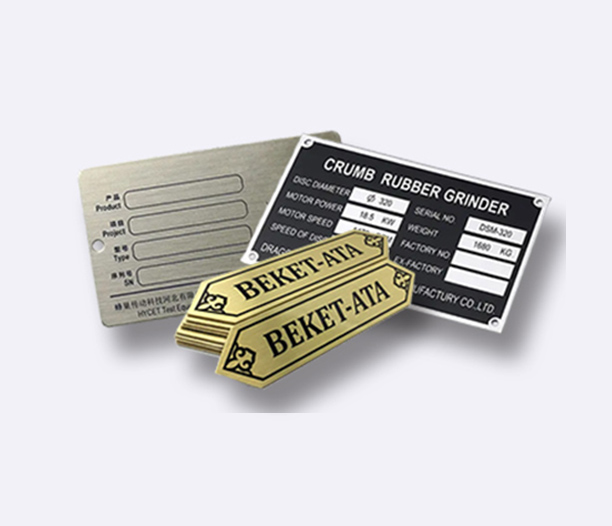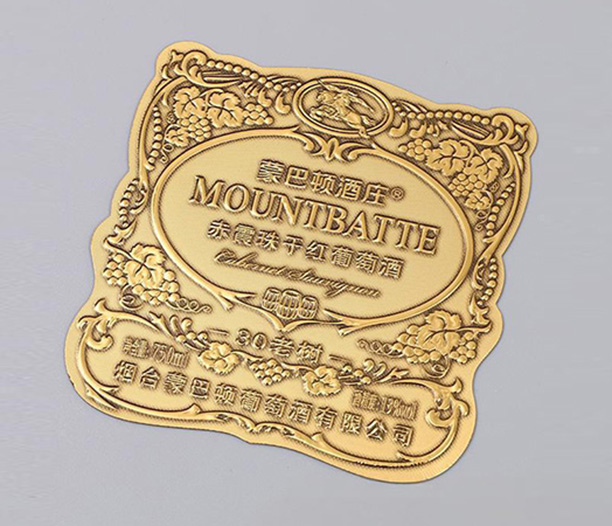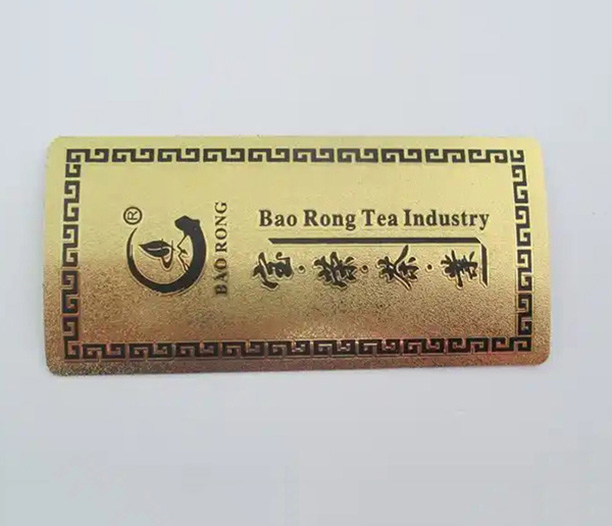In a world demanding lasting identification and traceability, stainless steel tags engraved stand out as the pinnacle of durability, professionalism, and resilience. These unassuming yet powerful markers are indispensable across countless industries, from heavy machinery and aerospace to medical devices and asset management. This comprehensive guide delves deep into why engraved stainless steel tags are the preferred choice, exploring their material advantages, engraving techniques, diverse applications, key benefits, customization options, selection criteria, and industry-specific uses. Discover how stainless steel tags engraved provide permanent, reliable solutions for your most demanding identification needs.
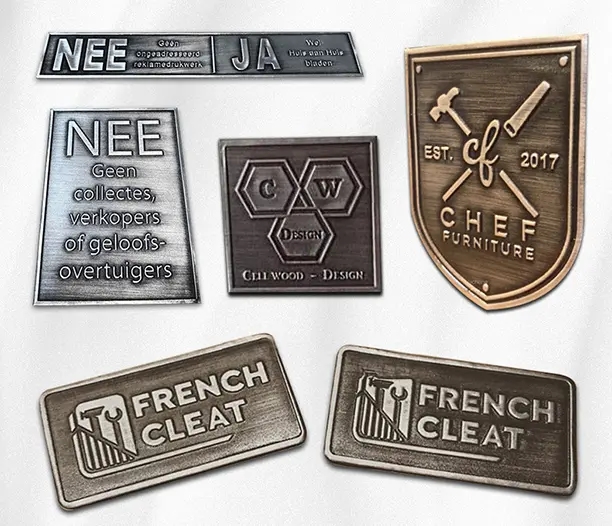
Why Stainless Steel? The Unmatched Material Advantage
The foundation of stainless steel tags engraved lies in the exceptional properties of stainless steel itself, primarily grades 304 and 316. These alloys offer a combination of characteristics that make them ideal for permanent, harsh-environment tagging:
Superior Corrosion Resistance: The chromium content (min. 10.5%) forms a passive oxide layer that protects against rust and corrosion caused by water, humidity, chemicals, salt spray (crucial for marine applications), and industrial atmospheres. Grade 316, with added molybdenum, offers even greater resistance to chlorides and acids.
Exceptional Strength & Durability: Stainless steel provides high tensile strength and impact resistance. Engraved stainless tags resist bending, denting, abrasion, and general wear and tear far better than softer metals like aluminum or brass, or plastics. They withstand physical abuse in industrial settings.
High Temperature Tolerance: Stainless steel maintains its integrity and legibility at both high and low extremes, unlike plastics that can melt, warp, or become brittle. This is vital for tags on engines, boilers, furnaces, or cryogenic equipment.
Non-Magnetic Properties (Austenitic Grades): Grades 304 and 316 are generally non-magnetic, making them suitable for applications where magnetic interference is a concern, such as near sensitive electronics or medical imaging equipment (MRI).
Hygiene and Cleanability: The smooth, non-porous surface of stainless steel inhibits bacterial growth and allows for thorough cleaning and sterilization with harsh chemicals or high-pressure washes. This is essential for food processing, pharmaceutical, and medical applications.
Professional Aesthetic: Stainless steel tags engraved offer a clean, modern, and highly professional appearance. The engraved markings provide excellent contrast and permanence, enhancing brand perception on equipment, products, or awards.
These inherent material properties ensure that information on stainless steel tags engraved remains intact, legible, and secure for decades, even in the toughest conditions.
Precision Marking: Engraving Techniques for Stainless Steel Tags
Creating the permanent markings on stainless steel tags engraved requires specialized techniques. The choice of method depends on factors like required depth, speed, detail, tag thickness, and budget:
Diamond Drag Engraving:
Process: Uses a sharp, industrial diamond stylus physically dragged across the metal surface under pressure, displacing material to create grooves.
Advantages: Excellent for creating deep, highly tactile, and durable marks. Ideal for serial numbers, barcodes, and text needing maximum longevity and resistance to over-painting or abrasion. Relatively quiet and doesn't generate heat.
Disadvantages: Slower than some methods. The stylus wears over time and requires replacement. Best suited for softer metals but works effectively on stainless with robust machines.
Rotary Engraving:
Process: Uses a spinning carbide or diamond-tipped cutting tool (like a tiny end mill) to physically cut into the metal, removing material.
Advantages: Produces very clean, V-shaped grooves with crisp edges and high detail. Capable of deeper cuts than diamond drag. Excellent for intricate logos, fine text, and creating recessed areas for fill colors (like epoxy or paint).
Disadvantages: Generally slower than laser marking. Generates metal swarf (chips) requiring collection. Cutting tools wear and need sharpening or replacement. Louder operation.
Laser Marking/Engraving:
Process: Uses a high-power focused laser beam to alter the surface of the stainless steel. For true engraving, it vaporizes material to create a cavity (typically shallow). More commonly, annealing marking (creating a dark oxide layer without removal) or ablation (removing a surface coating) are used for high-contrast marks.
Advantages: Extremely fast, highly precise, and contactless (no tool wear). Excellent for complex graphics, 2D data matrix codes, and very fine details. Computer-controlled for high automation. No consumables (besides power/laser source).
Disadvantages: True deep engraving is slower than diamond drag or rotary for equivalent depth. Annealing marks, while highly durable and corrosion-resistant, are surface-level and potentially less tactile. High initial equipment cost. Requires proper safety measures (eye protection, fume extraction).
Chemical Etching:
Process: Uses a chemical resist (mask) applied to the tag. The desired design is exposed, and the unprotected areas are etched away by an acid or alkaline solution.
Advantages: Good for complex designs and batch production. Can produce very consistent results on flat or slightly curved surfaces. No mechanical stress on the part.
Disadvantages: Involves hazardous chemicals requiring strict handling and disposal protocols. Less common for standard tags due to environmental and safety concerns compared to mechanical or laser methods. Edge definition might be slightly less sharp than engraving.
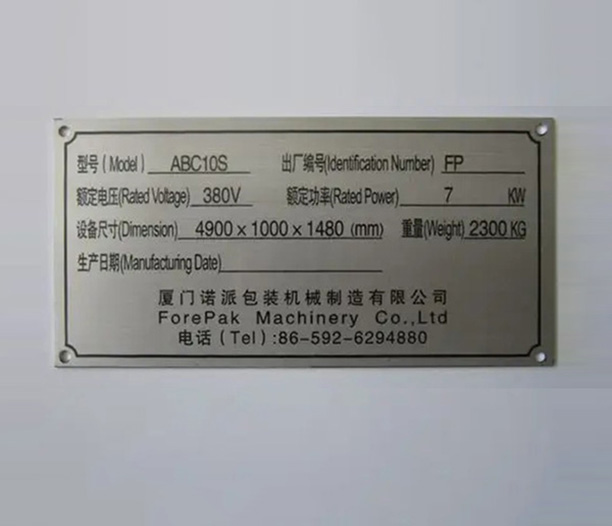
Endless Applications: Where Engraved Stainless Tags Excel
The robustness and permanence of stainless steel tags engraved make them suitable for a vast array of demanding identification and tracking scenarios:
Industrial Equipment & Machinery: Permanent nameplates with model/serial numbers, ratings, electrical data, fluid capacities, and safety warnings on valves, pumps, motors, generators, control panels, and heavy machinery. Essential for maintenance, repair, and compliance (OSHA, CE, etc.).
Aerospace & Defense: Critical for part traceability (often requiring unique identifiers - UID), component identification, maintenance logs, and meeting stringent MIL-SPEC standards (e.g., MIL-STD-130, MIL-DTL-15024). Resists jet fuel, hydraulic fluids, and extreme environments.
Marine & Offshore: Identification tags on ship components, offshore platforms, buoys, and underwater equipment. Stainless steel tags engraved (especially Grade 316) withstand constant saltwater exposure and harsh marine atmospheres.
Medical & Laboratory: Device identification (UDI compliance), instrument labeling, surgical tool tracking, autoclave tags, and chemical container labels. Withstands repeated sterilization (autoclaving, chemical baths) and offers required hygiene.
Food & Beverage Processing: Equipment identification, maintenance tags, and process control labels. Resists corrosion from cleaning chemicals (CIP/SIP processes), steam, and food acids, and meets hygiene standards (FDA, NSF, 3-A).
Oil, Gas & Chemical Processing: Valve tags, pipe markers, equipment IDs, and safety labels in highly corrosive and explosive (Ex-proof) environments. Resists hydrocarbons, acids, solvents, and extreme pressures/temperatures.
Asset Tracking & Management: Permanent asset tags with unique barcodes, QR codes, or serial numbers for IT equipment, tools, fleet vehicles, and high-value inventory. Deters tampering and survives harsh handling.
Architectural & Construction: Room numbers, floor designations, directional signs, and equipment labels in buildings requiring durable, vandal-resistant, and fire-safe identification.
Transportation & Automotive: VIN plates (often aluminum, but stainless used for specific components), chassis numbers, component IDs on engines/transmissions, and rail/transit asset tagging.
Awards & Recognition: High-end plaques, name badges, and commemorative plates where permanence and a premium feel are desired.
Compelling Benefits: Why Choose Engraved Stainless Tags?
Opting for stainless steel tags engraved delivers significant advantages over alternative materials and marking methods:
Unrivaled Permanence & Longevity: The core benefit. The combination of the durable substrate and physically engraved markings (or deeply laser-annealed marks) ensures information remains legible for the entire lifespan of the asset – often decades. Resists fading, weathering, chemicals, and abrasion.
Extreme Environmental Resistance: Excels in conditions that destroy paper, plastic, or even other metals: saltwater, UV radiation, high heat, freezing temperatures, moisture, dirt, oils, solvents, and industrial chemicals.
Tamper-Evident & Secure: Engraving is extremely difficult to alter or remove without obvious damage. Deep engraving provides inherent security for serial numbers and critical data, deterring counterfeiting and unauthorized changes.
High Legibility & Professionalism: Engraved characters (especially when filled with color) or high-contrast laser marks offer excellent readability at a glance or by barcode scanners. The material itself conveys quality and reliability.
Versatility: Available in numerous sizes, shapes (rectangle, oval, round, custom), thicknesses, and finishes (brushed, polished, matte). Can accommodate text, numbers, logos, barcodes (1D & 2D), and complex graphics.
Regulatory Compliance: Meets or exceeds the requirements of numerous international standards for permanent identification in critical industries (MIL-STD, ANSI, ASME, ISO, UL, ATEX/IECEx for hazardous areas).
Low Lifetime Cost: While the initial cost per tag might be higher than plastic or aluminum alternatives, the exceptional lifespan and zero need for replacement make stainless steel tags engraved the most cost-effective solution long-term.
Customization Options: Tailoring Your Stainless Tags
Stainless steel tags engraved are highly customizable to meet specific functional and aesthetic needs:
Size & Shape: Standard sizes are readily available, but custom dimensions and shapes (die-cut) are common to fit specific mounting locations or design requirements.
Thickness: Ranges from thin, flexible shim stock (e.g., 0.005" / 0.127mm) for wrapping around cables, to rigid plates (e.g., 0.032", 0.063", 1/16", 1/8") for machine nameplates or heavy-duty tags. Thickness impacts engraving depth and overall durability.
Finishes:
Brushed: Most common, provides a satin, non-reflective surface that hides minor scratches.
Polished: Offers a mirror-like, high-end appearance for awards or visible consumer-facing products.
Matte/Bead Blasted: Provides a uniform, low-glare, slightly textured finish.
Color Coatings: Optional epoxy or vitreous enamel coatings can be applied over the engraved tag (not typically within the engraving itself) for branding or color-coding, though the engraving itself usually remains silver/stainless.
Engraving Fill Color: For deep engraved characters (diamond drag or rotary), colored epoxy or paint can be manually filled into the grooves to create high-contrast lettering (e.g., black fill on silver). Laser annealing naturally creates a dark mark (often black or dark grey) on stainless.
Mounting Options:
Holes: Pre-punched holes (round, slotted) for rivets, screws, bolts, or zip ties.
Adhesive: High-performance industrial adhesives (acrylic, silicone) applied to the back for permanent bonding to clean, smooth surfaces.
Welding: Tags can sometimes be designed with tabs or prepared for spot welding directly to equipment.
Wire Loops: Integral loops for hanging or attaching.
Sequential Numbering: Automated systems can engrave unique sequential serial numbers or barcodes on each tag in a batch, essential for traceability.
Choosing the Right Engraved Stainless Tag: Key Considerations
Selecting the optimal stainless steel tags engraved involves evaluating several factors:
Environment: This is paramount. For harsh chemical exposure or marine use, Grade 316 is essential. For general industrial use, Grade 304 is often sufficient and more economical. Consider temperature extremes, UV exposure, and abrasion potential.
Required Durability & Security: How critical is it that the marking cannot be removed or altered? Deep engraving (diamond drag or rotary) offers the highest level of tamper resistance. Laser annealing is highly durable but surface-level.
Information Type & Detail: Simple text and numbers? High-density barcodes (2D Data Matrix)? Intricate logos? Laser excels at complex graphics and tiny 2D codes. Deep engraving is ideal for highly tactile, deep marks needed for longevity through over-painting or extreme abrasion.
Legibility Requirements: Need high contrast for quick reading or machine scanning? Consider fill colors for deep engraving or the natural dark contrast of laser annealing on stainless.
Size & Mounting Constraints: Measure the available space and choose a compatible mounting method (adhesive strength, hole size/location).
Quantity & Budget: Laser marking is highly efficient for large batches with complex data. Deep engraving might be cost-effective for smaller runs or where maximum depth is non-negotiable. Consider tooling costs for custom shapes.
Regulatory Compliance: Ensure the chosen material, marking method, and data format meet any applicable industry or safety standards (e.g., depth requirements for UID tags, specific materials for food contact).
Industry-Specific Requirements for Engraved Tags
Certain sectors have unique demands for their stainless steel tags engraved:
Aerospace & Defense (A&D): Strict adherence to standards like MIL-STD-130 (marking for identification), MIL-DTL-15024 (material spec for nameplates), and UID requirements (Unique Item Identification using Data Matrix symbols). Deep engraving or specific laser marking protocols are often mandated for permanence and traceability under extreme conditions.
Medical Devices: Must comply with UDI (Unique Device Identification) regulations, requiring specific data formats and barcodes on labels/tags. Biocompatibility standards (ISO 10993) might apply if the tag contacts the body. Resistance to repeated sterilization cycles is critical.
Oil, Gas & Chemical (OGC): Tags used in hazardous locations (Ex-zones) often require specific certifications (ATEX, IECEx) for the marking process and materials to prevent ignition sources. Extreme chemical resistance (Grade 316+) is essential.
Food & Beverage (F&B): Tags must withstand aggressive cleaning (CIP/SIP) and meet hygiene standards (e.g., NSF/ANSI 51, 3-A Sanitary Standards). Smooth surfaces without crevices where bacteria can hide are crucial. Material must be food-safe.
Marine: Dominated by Grade 316 or higher (like 316L) for maximum saltwater corrosion resistance. Tags often need to withstand constant moisture, salt spray, and potential immersion.
Stainless steel tags engraved represent the gold standard for permanent, reliable, and secure identification in the most demanding environments. Their inherent strength, corrosion resistance, and the durability of the engraving process itself ensure critical information – from serial numbers and safety warnings to complex barcodes and intricate logos – remains intact and legible for the lifespan of the asset. Whether facing the rigors of an offshore platform, the sterile conditions of an operating room, the vibrations of a factory floor, or the corrosive elements of chemical processing, engraved stainless steel tags deliver unmatched performance.
Understanding the nuances of material grades, engraving techniques, customization options, and application-specific requirements is key to selecting the optimal tag solution. By investing in stainless steel tags engraved, organizations achieve not just compliance and traceability, but also long-term cost savings through reduced replacement needs and enhanced operational efficiency. For any application demanding permanence, resilience, and professionalism, stainless steel tags engraved are the definitive, long-lasting answer. Partner with a reputable manufacturer to leverage their expertise in creating custom tags that precisely meet your technical and aesthetic specifications.



